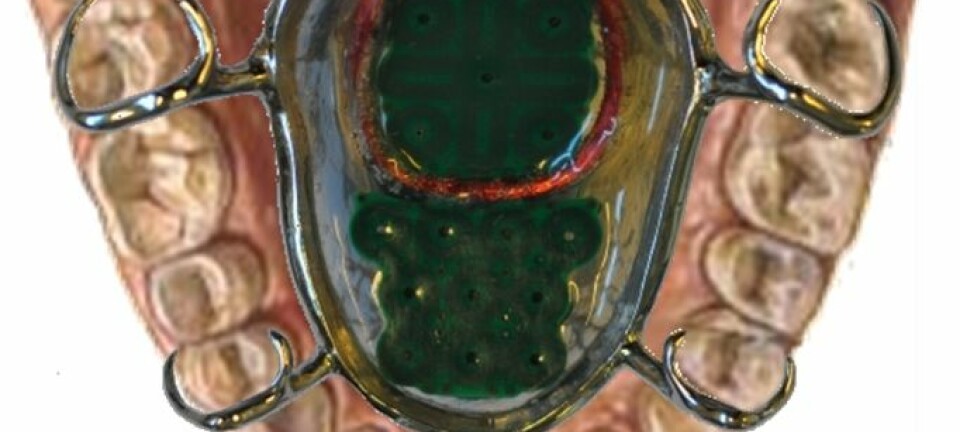Ear surgeons practice on virtual dismembered brain
Otologists can now hone their surgical skills with a new Danish computer program, which is currently being translated into several languages.
If an ear surgeon misses by only a millimetre when operating a patient, the consequences can be fatal.
But a new computer program now enables ear specialists around the world to operate on a virtual patient, who will not suffer at the hands of an inexperienced surgeon.
”It goes without saying that it’s a good idea to practice before you start drilling into the skull of a live patient. We have tried to make the program as realistic as possible so that otologists can practice their skills in a safe environment,” says one of the programmers, Peter Trier Mikkelsen, of the Alexandra Institute in Aarhus.
’The Visible Ear Simulator’ has already been downloaded by otologists from numerous countries and is currently being translated into German, Spanish, French, Russian, Portuguese, Greek and Chinese.
Head photographed in 605 slices
It may sound a bit morbid to cut a head into so many slices, but it does provide us with some fantastic data, with all the right colours.
The program has been more than ten years in the making. To make the operation exercises as realistic as possible, the image data includes pictures of a real head from a deceased person.
”The Institute of Anatomy at Aarhus University donated a half head. It was a frozen block containing the ear and the surrounding structures,” says Mikkelsen.
Download the program and see more videos here
“We sliced 25 micrometres [0.025 mm] at a time off the block, and after every four cutaways, we photographed the block,” explains Mads Sølvsten Sørensen, clinical associate professor at Copenhagen University’s Department of Clinical Medicine, Section of Neurology, Psychiatry and Sensory Sciences.
The program uses a special joystick that allows you to feel quite accurately when you hit a bone, and if for instance you’re drilling, you can feel the stick starting to shake.
A total of 605 thin slices were photographed.
“It may sound a bit morbid to cut a head into so many slices,” says Mikkelsen, “but it does provide us with some fantastic data, with all the right colours.”
Feels like a real operation
Mikkelsen launched the first version of the program together with a colleague in 2009.
“The program uses a special joystick that allows you to feel quite accurately when you hit a bone, and if for instance you’re drilling, you can feel the stick starting to shake,” says Mikkelsen.
Some of those who have used the program have told me that it feels so real that they could feel it in their stomachs when they made a mistake – just as if it were a real patient.
“Some of those who have used the program have told me that it feels so real that they could feel it in their stomachs when they made a mistake – just as if it were a real patient.”
Otologists can e.g. use the program to practice their cochlear implant drilling skills. They can also practice a number of surgical procedures for the treatment of e.g. cancer or chronic middle ear infections.
The researchers are currently working on a new and expanded version of ‘The Visible Ear Simulator’, but according to Sørensen, the first version has already been downloaded more than 1,500 times across the world.
More computer games for doctors
Today, we are seeing an ever-increasing amount of computer programs that can be used by doctors and students to practice a wide variety of operations. There are programs that can make interventions in the heart, brain, respiratory tract, stomach, knees and many other parts of the body.
And the Danish ear simulator isn’t the only one of its kind on the market. Researchers in Germany, the US and Australia have also developed programs that enable doctors to practice their surgical skills in the ear region.
“But our program differs from the others, first of all because it’s downloadable free of charge. Our data is also more accurate, since it’s based on pictures of real anatomical features and has the right colours,” says Sørensen.
“The other programs are made using X-rays and CT scans, but they are greyed out, so there you need to put in the colours afterwards. And the levels of detail and the resolution are not nearly as high in the other programs.”
He adds that unlike the competitors, the Danish program runs in real time – any movement with the joystick is instantly displayed on the screen.
---------------------------
Read the Danish version of this article at videnskab.dk
Translated by: Dann Vinther
External links
- Peter Trier Mikkelsen's profile (in Danish only)
- Mads Sølvsten Sørensen’s profile
- Download 'The Visible Ear Simulator' here







